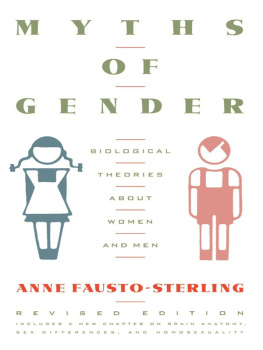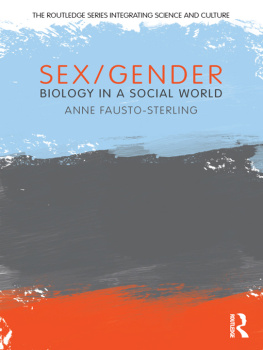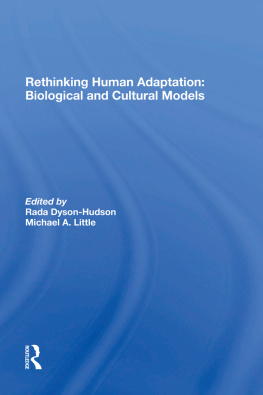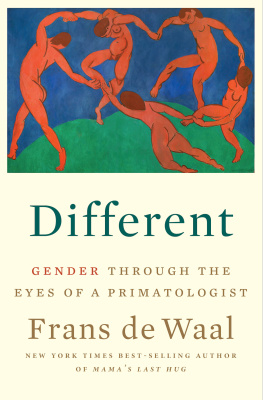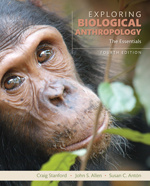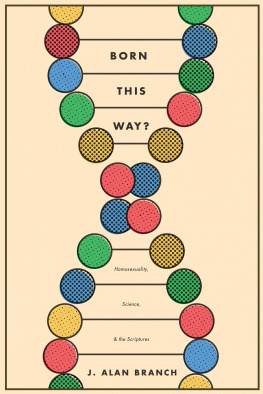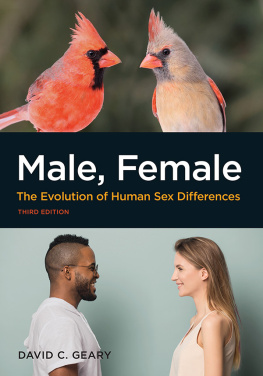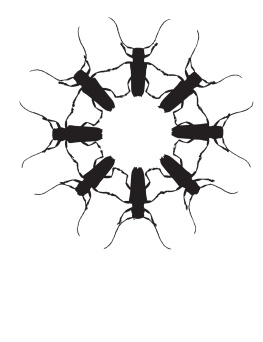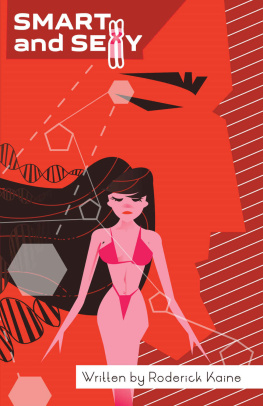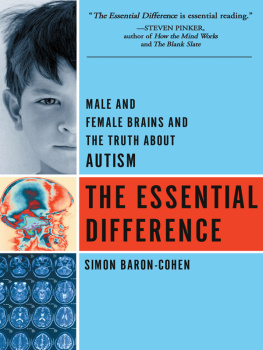Copyright 1985 by BasicBooks, A Member of The Perseus Books Group Preface, chapter eight, and afterword to second edition copyright 1992 by BasicBooks.
All rights reserved. Printed in the United States of America. No part of this book may be reproduced in any manner whatsoever without written permission except in the case of brief quotations embodied in critical articles and reviews. For information, address BasicBooks, 387 Park Avenue South, New York, NY 10016-8810.
PREFACE TO THE SECOND EDITION
IN AUGUST 1991 I received a phone call from a reporter: Did I know about a forthcoming article claiming that homosexual and heterosexual men had different brain structures? Would I comment on it? After receiving and reading a fax of the article (it was still available only to the press), I discussed it at length with the reporter. As it turned out, this phone call was the first of many, and as the time I spent talking about this three-page scientific report stretched from hours to days, I grew increasingly frustrated.
My frustration had at least three components. First, the public discussion was not only about homosexuality but about gender and sex differences as well. The logic was that men and women had different brains; therefore gay men might have brains that looked more like those of women and lesbians might have brains more like those of men. The question of sex differences in cognition was one I considered in extenso in the first edition of this book, and thus to see it leap once more to the forefront of public discussion made me weary. Second, I knew that the public debate was really about the question of social equity. Should gay people have full civil rights? Should they be treated as if they had a disease? Should little girls be expected to perform well in mathematics and become engineers? After more than ten years of conservative government, ongoing feminist activities, and the rise of militant gay activism, the backlash was upon us. Having fought such battles for several decades, I did not relish having once more to leap into the fray. But as one of a handful of scientists equipped to fight this particular battle, I felt that I had no choice. Finally, as an intellectual problem the question of examining alleged biological differences has ceased to interest me. I dealt with it when I wrote the first edition of Myths of Gender and have since moved on to other things. Being forced back into a discussion of bodily differences has diverted me from my current intellectual endeavors, and I can hardly hide my resentment.
There is no denying the issue, however. As the press calls and the invitations to public debate continued, I suggested to my editor at Basic Books that we do a second edition addressing this latest round of controversy. He agreed, and what follows is the result. I have added two entirely new chapters: examines work done since 1985 on sex differences, homosexuality, and the anatomy of the human brain; the afterword selects and updates issues dealt with earlier in the book. I have not altered the original material, believing that it stands on its own. I hope that the additional information will help people to think more clearly about the current round of controversy, about politicized bodies and the body politic.
Anne Fausto-Sterling
25 February 1992
ACKNOWLEDGMENTS
THIS PROJECT has taken more than four years to complete. During that time many people have supported the work in many different ways. At the most tangible level, I have received fellowships from the Wellesley Center for Research on Women at Wellesley College and from the Pembroke Center for Teaching and Research on Women at Brown University. The Brown University administration has cooperated in granting me both a sabbatical leave and leaves of absence to utilize these fellowships. Other forms of practical help have come from the librarians at both the Sciences and Rockefeller libraries at Brown University, who went out of their way to deal with my sometimes urgent and often oddball requests. I have deeply appreciated their professional competence and their personal interest in my work. Christina Crosby and Carol Cohen both did extensive library work for me at critical times in the books development, and Carol King typed more than one version of the manuscript with great skill and, perhaps most importantly, with good humor. Her cheerfulness and sense of steadiness often provided balance for my more mercurial self-presentation. Lily Hsieh kept other parts of my professional life going, enabling me to focus on the book.
I have had the extraordinary good fortune to belong to two different extended families, known informally as the Tacky Family and the Alstead Book Society (and Eating Club). The gifts of their individual and collective friendships have on occasion kept me from drowning and have, among many other things, freed me to work on a project so seemingly unending as this book. To two Barbaras, David, Bill, Marlene, Nelson, Harold, Susan, two Elizabeths, Christina, Don, Joan, and Karen: thanks and may our friendship, love, and loyalty sustain us throughout our lives. A special thanks goes to the children of these families for sharing with me their unique and wonderful visions of the world. Daniel, Michael, Luke, Karl, Nathan, Toby, Bryony, and Liz: as you descend into the abyss of adulthood, may you never lose sight of the freshness and openness of childhood.
Many people have offered very particular kinds of help. Karen Romer believed in my ability to write a book long before I did. She constantly encouraged me, finding in the midst of her own busy life the time to read and comment on two manuscript drafts. Joan Scott fulfilled her professional duties as a literary schotkchun by putting me in contact with my editor-to-be, Steve Fraser. In writing this book I was kept fully in touch with the popular press through the devotion of several avid media watchers. My husband, Nelson Fausto, my aunt, Alice Lake, and my mother, Dorothy Sterling, as well as quite a number of students and librarians at Brown University kept me papered with clippings and alerted to the latest relevant magazine articles. Lenny Erickson kept me abreast of the New York Review of Books and lent me his copy whenever necessary. Without their interest and consistent help my job would have been much harder. My father, Philip Sterling, lent his especially keen editorial eye to major parts of the manuscript, and his interest and suggestions have helped considerably in the final shaping of the work. So, too, have the excellent skills of my editor at Basic Books, Steven Fraser. Discussions with him helped put the book in final shape. His prompt and considerate feedback and his quick eye for what does and does not work moved things along.

